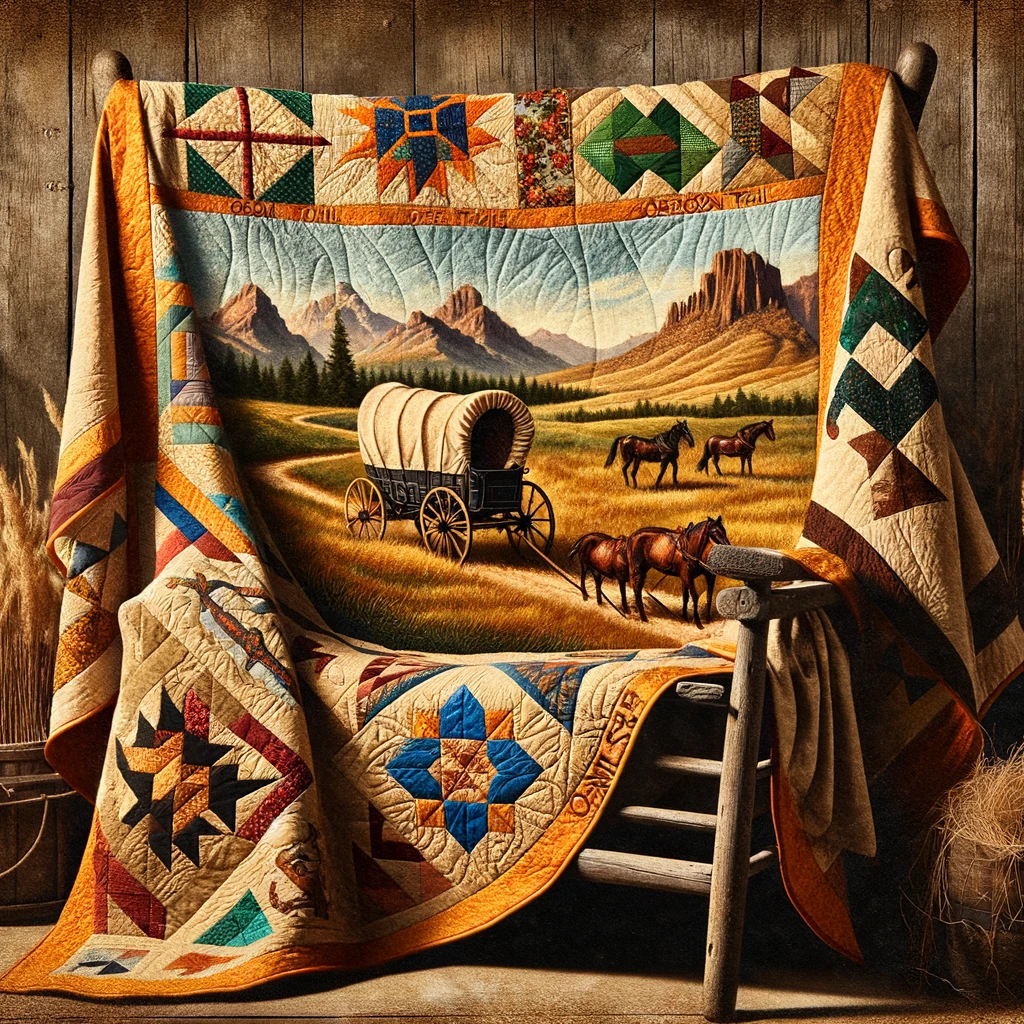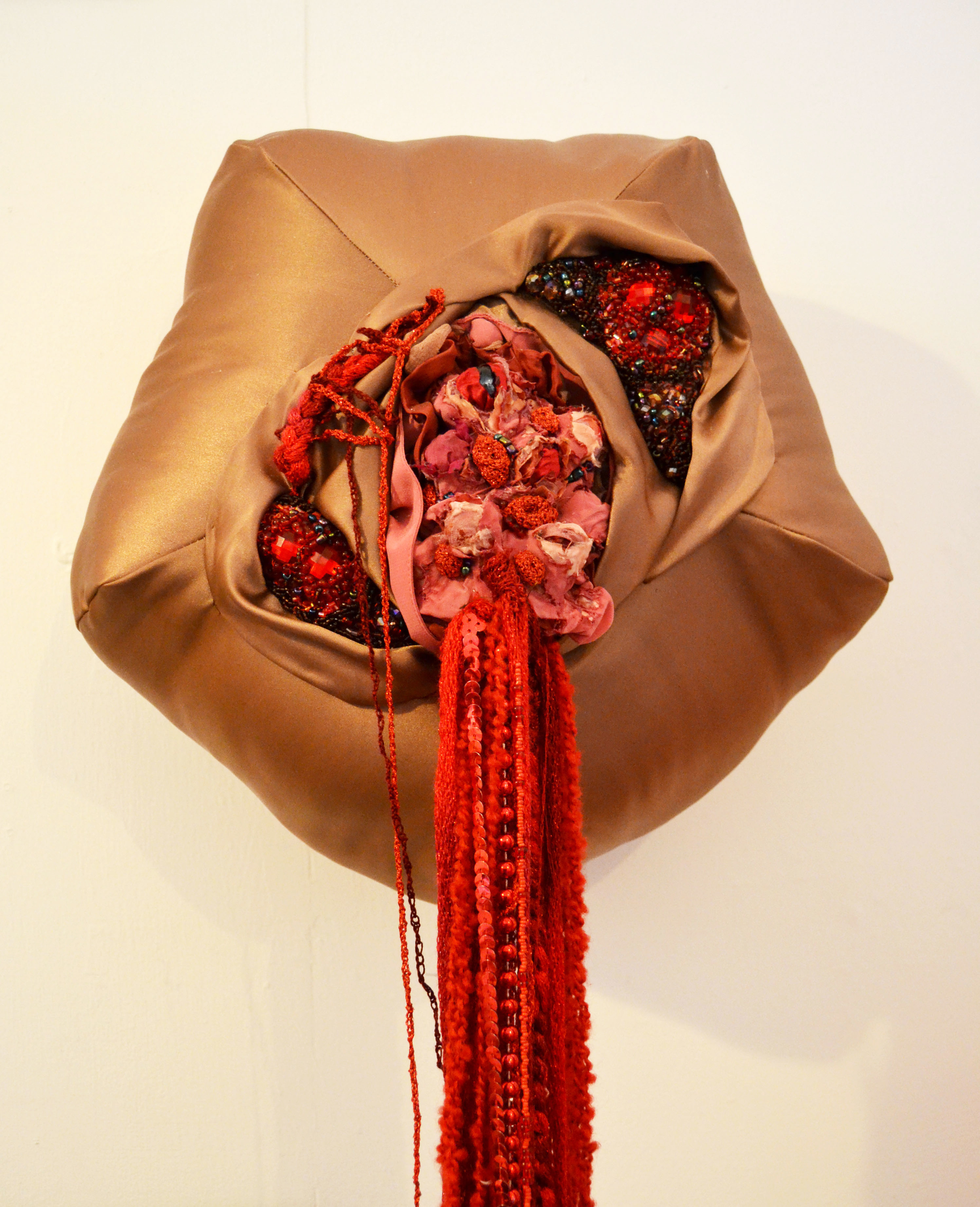Embark on a historical journey with Oregon Trail quilts, where every stitch and pattern echoes the tales of pioneers and their arduous treks across America.
These quilts, more than mere bedspreads, are canvases of history, capturing the essence of a time when families traversed the Oregon Trail. They symbolize resilience, creativity, and the enduring human spirit.
Let’s unravel the layers of these textile masterpieces and discover the stories they hold.
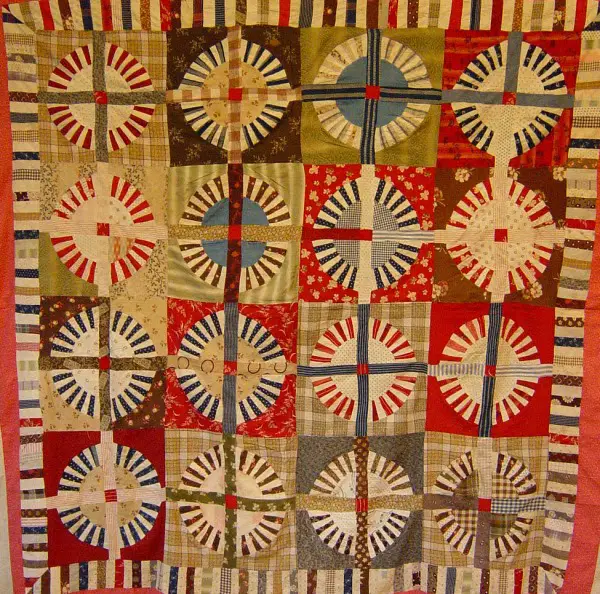
Quilt made while traveling the Trail
The Oregon Trail, etched deeply into American history, was the lifeline for thousands of settlers seeking new opportunities in the uncharted West. This epic migration, spanning roughly between 1840 and 1870, saw families, adventurers, and dreamers embark on a grueling journey across vast plains, rugged mountains, and untamed rivers. The trail symbolized not just a route, but a gateway to a new life, brimming with hopes and challenges.
As the 1870s dawned, the completion of the transcontinental railroad ushered in a new era of travel, offering a faster, more reliable means to traverse the nation. This monumental shift marked the end of an era for the Oregon Trail, transitioning it from a bustling pathway of pioneers to a historic emblem of American perseverance and exploration.
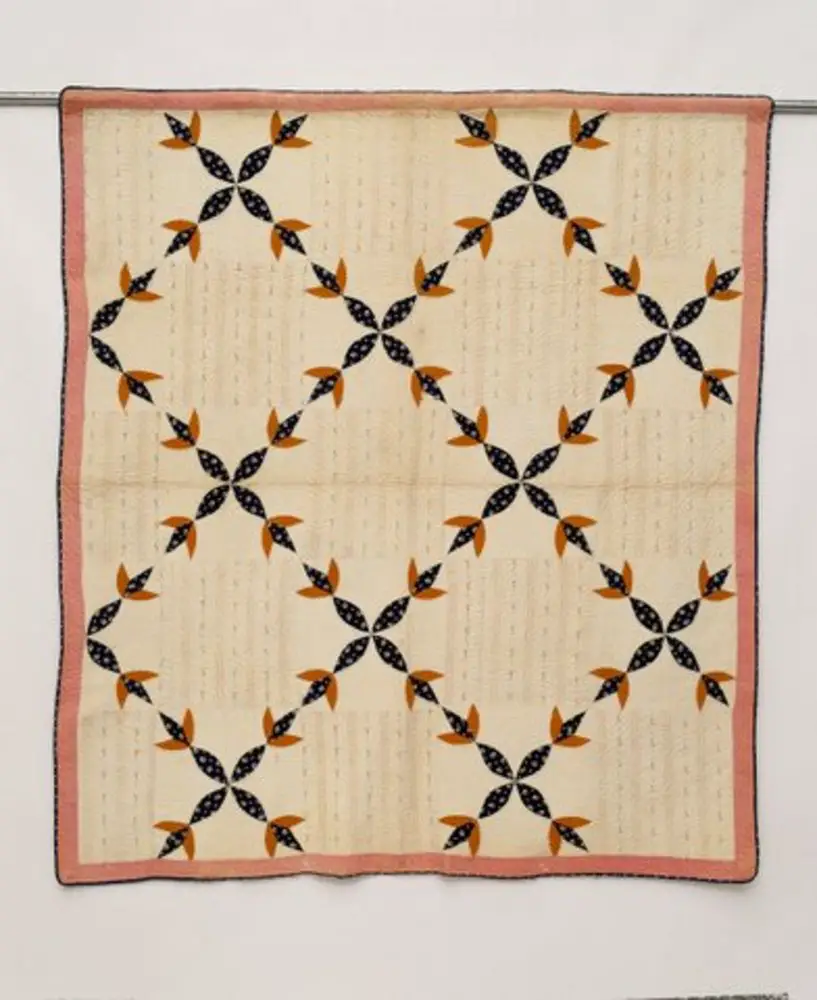
Many families brought quilts with them and according to Dr. Viki Sonstegard “We know that quilts were precious to pioneer women for a variety of reasons. They were indeed practical and comforting, but the quilts also kept them emotionally connected to their past.”
In addition Sonstegard states that some women made quilts in preparation of the journey they would embark on. In addition, friends would sometimes make quilts for those who were leaving them. These quilts would also serve as blankets, protection from the elements, and often be used to wrap the dead before burial along the trail.
According to Notes From the Frontier, “Willa Cather, the famous Pulitzer Prize winning writer who captured so poignantly life on the frontier in ‘O Pioneers!’ and ‘My Antonia,’ wrote of women quilters on the trail. She called quilts ‘good bye hugs in cloth’ and ‘broken Hallelujahs’ when they swaddled dead children and loved ones for burial on the trail.” I cannot help but envision the hardships and the inherently nurturing nature of quilts when reading such history..
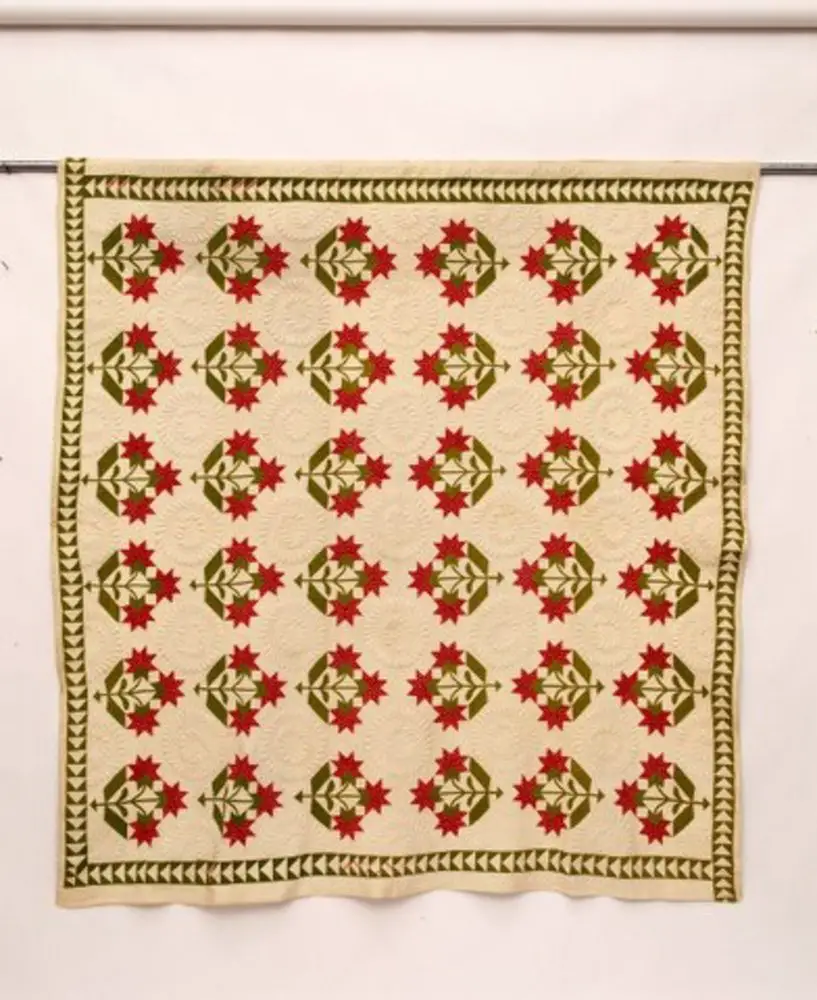
While all this illustrates quilts, in general, as it involves those on the Oregon Trail, one aspect of these quilts involves the quilts made along the trail!
Sonstegard indicates how “Women had a thousand miles to create friendship quilts for dear friends on the trail, since they most likely would never see them again once they’d gone their separate ways.”
Womenfolk.com, however, states, “Needless to say little quilting was done on the trail. A few women managed to piece some quilt blocks or perhaps a whole quilt top but more often women knitted or mended clothing during the short breaks and occasional layovers” due to the inherently jostling nature of riding in a wagon. I kind of cling to the notion that women DID make quilts, even if not a lot of them.
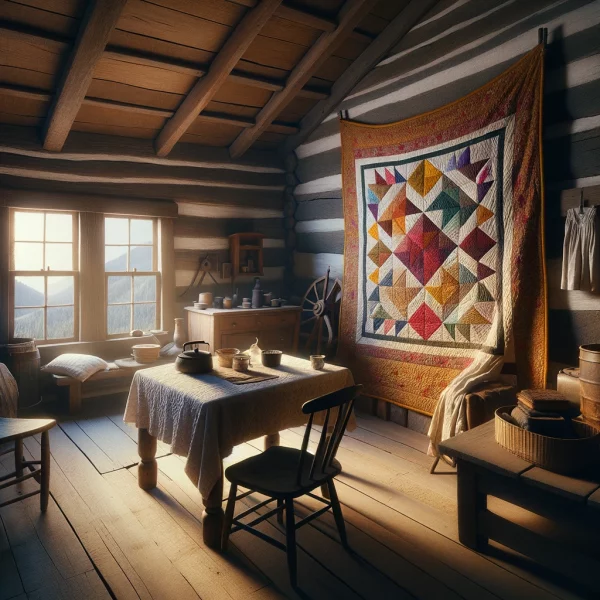
Once these families who did arrive safely at their destination the quilts became equally as important. They covered windows in cabins, separated a room for privacy, and clearly allowed the woman, or entire family, to feel a sense of normalcy, especially remembering their journey and their family far to the East.
Quilt making during the Oregon Trail era is a fascinating aspect of American history, reflecting the resilience and creativity of those who traveled the trail. Despite the arduous journey and the practical challenges of life on the move, quilting remained a significant activity for many women.
Sonstegard’s point about women using the journey to create friendship quilts highlights the emotional and social value these quilts held. They were more than just functional items; they were symbols of relationships and memories, often the only tangible keepsakes connecting pioneers with friends they might never see again.
However, as noted by Womenfolk.com, the reality of quilting on the trail was likely more subdued due to the demanding nature of the journey. The bumpy rides in wagons were not conducive to detailed quilt-making.
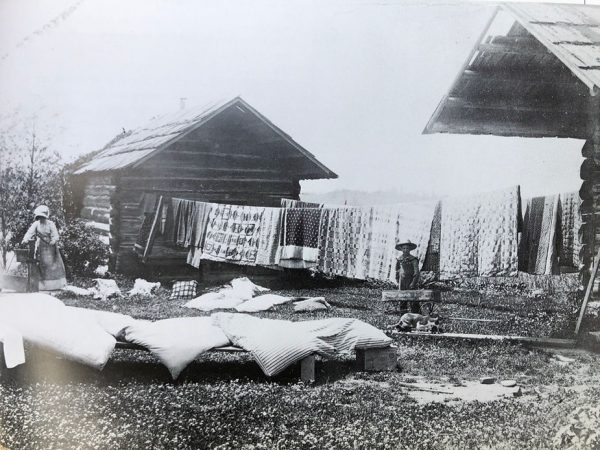
Instead, women often turned to more manageable tasks like knitting or mending. This doesn’t diminish the importance of quilts but rather underscores the adaptability and practicality of these women. Even the act of piecing together a few quilt blocks or planning a future quilt was a way of maintaining a sense of normalcy and a connection to a craft that was a fundamental part of their identity.
In essence, whether quilts were made on the trail or simply planned in the hearts and minds of these pioneer women, they were a crucial element of the American identity. They represented not just a craft, but a deeply personal form of expression, a way to hold onto friendships, and a means of creating beauty in the midst of challenging circumstances.
Quilting, in this context, becomes a metaphor for the pioneer spirit itself – resourceful, resilient, and ever hopeful.
If you want more historical quilts, our article on Gee’s Bend Quilts is a great read!

